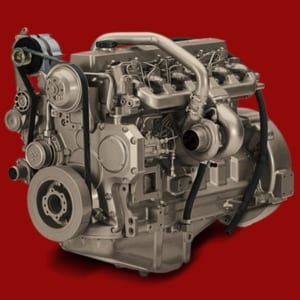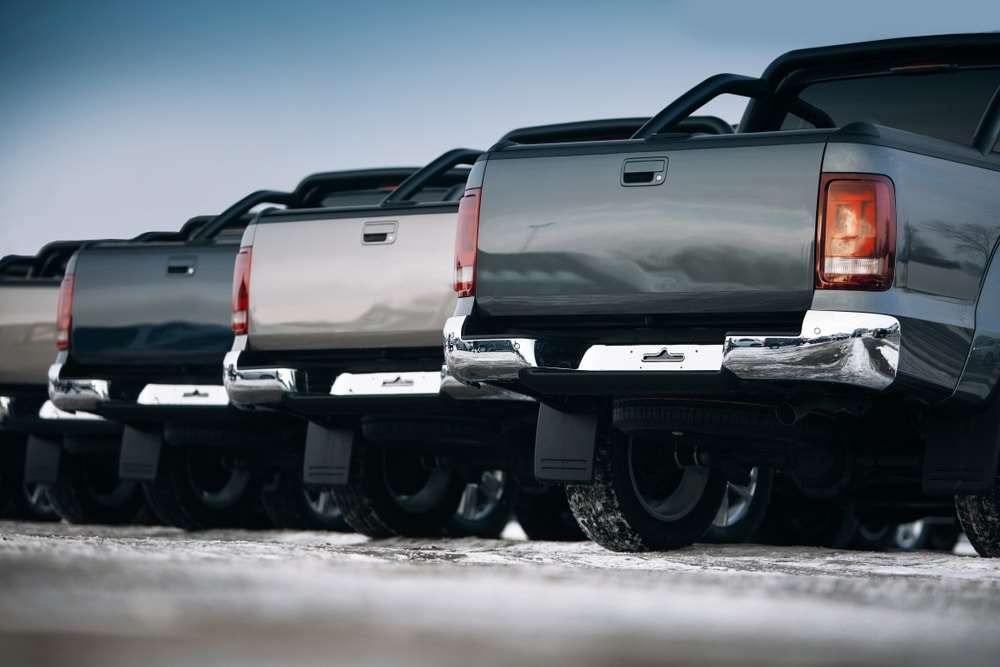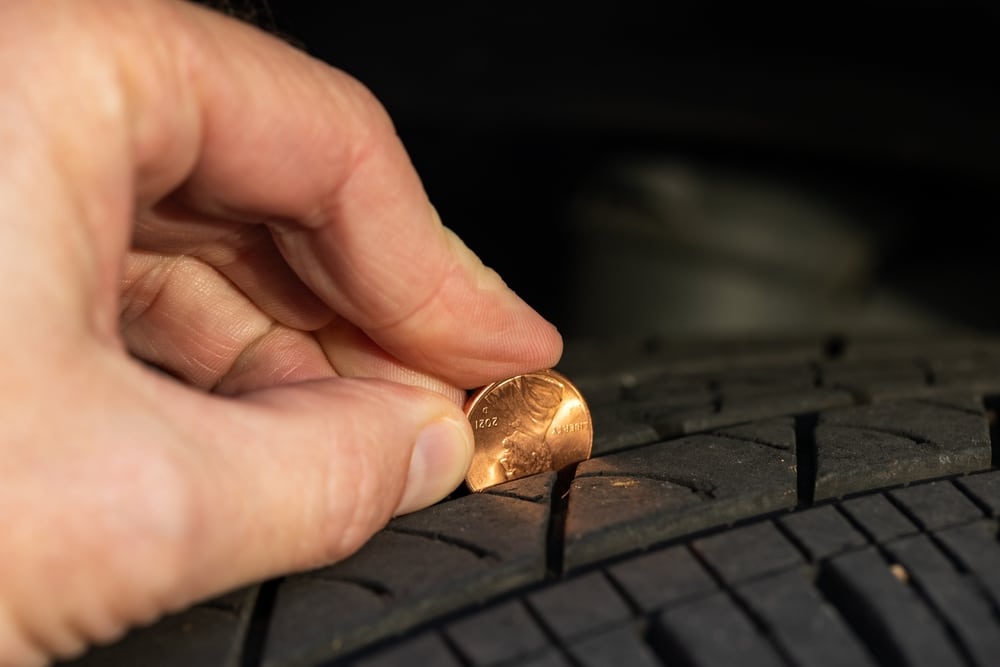When you see those giant trucks hauling huge loads up the hill, it might seem like a job of a standard engine, but what we mostly misunderstand is the immense power that a diesel engine generates to make this process work and get the work done. These diesel engines are the power source behind some of the biggest and strongest machines like trucks, trains, and ships.
What is a diesel engine, and how does it work?
 A diesel engine is a type of internal combustion engine, which allows the fuel to be burned inside the central part of the engine by injecting hot, high-pressure air into a chamber or the cylinders to produce power.
A diesel engine is a type of internal combustion engine, which allows the fuel to be burned inside the central part of the engine by injecting hot, high-pressure air into a chamber or the cylinders to produce power.
The standard gasoline engines we have in our cars are also internal combustion engines, unlike the external combustion ones found in old-fashioned steam locomotives; nonetheless, a diesel one is more powerful.
Moreover, you will also find these internal combustion engines to be more efficient as they do not waste a lot of energy as the heat just stays in one place. You will also find that your internal combustion engine produces more power from the same volume of fuel than does any other external combustion one.
The process of understanding how a diesel engine works can be explained in four simple steps:
Induction
This involves the process of sucking in air as the piston moves down the bore and opens the inlet valve. The key is to do so when air pressure is about 1.7 to nearly 2.4 megapascals. It is only then that the air can be inducted into each of the cylinders.
Other starting methods would depend on the size of the engine and the connected load. These may include using auxiliary equipment, admitting blasts of compressed air to an air-activated motor, supplying electric current to an electric starting motor, and using a small gasoline engine geared to the engine flywheel.
Compression
As the inlet valve closes at the bottom of the stroke, it will allow the piston to rise and compress the air gathered inside. A diesel engine does not use an air-fuel mixture but compresses air, which prevents pre-ignition problems mostly found in high-compression spark-ignition engines. More powerful compression ratios can be reached with diesel engines as well as a higher theoretical cycle efficiency.
Ignition


It is additionally interesting to see that these diesel engines are also known as compression-ignition engines because heating of air by compression rather than an electric spark is what causes the initiation of combustion.
Exhaust
When the piston travels upwards, it will open up the exhaust valve allowing the burned gas to go out. A turbocharger and an aftercooler in diesel engines have improved performance in terms of efficiency and power.
How is the diesel engine different from petrol and gasoline engines?
Although a diesel engine and a petrol engine share a lot of similar major components and both work on the four-stroke cycle, there are several inherent differences in the way the fuel ignites in both these engines and how power output is regulated.
The following are the most important differences between the two:
Ignition
In a petrol or gasoline engine, the fuel and air mixture is ignited by a spark. The process starts by injecting fuel and air into small metal cylinders, and the compression of the piston makes this mixture explosive. It consequently ignites through an electric spark when the sparking plug in the engine sets it to fire. This fuel and air mixture will then explode, generating enough power to push the piston down on the cylinder and start the vehicle.
Although diesel engines may follow a more straightforward process, they are much more manageable. Ignition in diesel engine only requires the compression of air. When on the one hand, a petrol engine has a typical compression ratio of 9:1, a diesel engine works on a 20:1 compression ratio. Hence, compressions alone can ignite the fuel when the air is at a higher temperature, without the need of an electric spark or any other ignition system.
An easy way to understand this process is to relate it to when you are pumping your bicycle tire. You might notice that the pump is getting hotter the longer you make use of it. This shows that compressing air generates heat. So, in the same manner, a diesel engine compresses heat in even smaller space. This makes the air hot; it can go up to 500°C and sometimes even higher.
Hence, then when the fuel is injected, it ignites instantly and explodes without the need for a spark plug, which, on the other hand, is required in a petroleum or gasoline engine. This whole process demonstrates the strength and efficiency of the diesel engine and how important it has become as compared to other types of engines, specifically those that work on petroleum and gasoline.
Air per suction
A diesel engine always draws the same amount of air, no matter what the engine speed is, through an inlet tract that opens and closes only with the help of an inlet valve. Whereas, in a petrol engine you will find a varying amount of air drawn in. It will depend on the amount of throttle opening.
Construction of the engine
Although you may find that a diesel engine looks almost the same as a petrol or gasoline engine and contains nearly equal parts, it has a lot of other components to it, which makes it more durable than a petrol or gasoline engine.
You will find that a diesel engine usually has thicker walls and more bracing webs as compared to a petrol engine. This allows it additional strength and helps it in enduring extra stress.
A diesel engine is usually a more heavy-duty block, with stronger connecting rods, pistons, bearing caps, and crankshafts. As the shape of the combustion and swirl chambers of a diesel engine is different from petrol or gas one, you will find that the cylinder head design for both is also different.
Fuel
As it is apparent, a diesel engine works on diesel fuel, and the petrol engine works on petrol; however, it is necessary to understand how these different fuels are compatible with the workings of their engines and make them more efficient.
The diesel fuel is mostly less refined, more substantial, more viscous, less volatile than petrol. For those of you who have seen ‘derv’ written on a diesel pump station, this is the fuel for you to use for your diesel engine vehicles.
The relation between diesel fuel and water is also essential to note in this case. It can stiffen or even solidify when it is cold as it may observe quantities of water, which may freeze. It can handle around 50 or 60 parts of water. This may be a bit problematic as it can cause the freezing or waxing of fuel lines and injectors.
If you have ever seen anyone blowing lamps on their diesel-engine truck during winters, you must understand this is why. Moreover, others also use certain additives to avoid this problem.
More importantly, you will find that diesel fuel has a higher energy density than petrol and gasoline. This greater power of around 147,000 BTU generated by one gallon of diesel fuel, on average, means that it comes with a higher power, efficiency, and better mileage.
This also explains why diesel fuel is used to power essential transport vehicles such as buses, trucks, trains, cranes, construction and farming equipment, as well as boats, making it critical to the construction, transport, and agriculture industry, and consequently the whole economy.
Types of diesel engines
You will find that diesel engines come in two different types: two-stroke and four-stroke. Stroke refers to the operation of the piston in the engine, and this fundamentally differentiates between the two models.
Two-stroke
A two-stroke diesel engine uses the stroke in two directions to complete its cycle. The first stroke is all about compression when the piston moves up and results in the ignition of compressed fuel. The second stroke or the return stroke happens when the piston moves down just once to bring new fuel into the cylinder.
The two-stroke engine usually follows these three necessary steps:
- Exhaust and intake: when the fresh air enters the cylinder pushing out the old out through the valves at the top.
- Compression: this takes place when the inlet and exhaust valves close, and the piston moves up to compress and then consequently heat the air. The fuel is added when the piston reaches the top of the cylinder, and then leads to spontaneous ignition.
- Power: with the ignition of the air and fuel mixture, the piston will be moved down, and power will be sent to start the wheels.
Four-stroke engines
A four-stroke engine can be part of both a diesel engine and a petrol or gasoline engine. It has one compression stroke and one exhaust stroke, as well as each having a return stroke, making it a four-stroke engine in total.
The compression stroke is involved with compressing the air and fuel mixture to lead to ignition, whereas the exhaust stroke deals with releasing burnt gases. The piston, in this case, moves up and down twice.
The four-stroke engine involves four main steps:
- Intake: this consists of drawing in air to the cylinder through the inlet valve as the piston moves down.
- Compression: this takes place when the piston moves up, closing the inlet valve and compressing the air to heat it. As fuel is injected into this, ignition takes place without a sparking plug.
- Power: with ignition, the piston is pushed down, and power is sent to the wheels.
- Exhaust: the piston now returns, and the burnt gases are far pushed out through the outlet valve.
Differences between the two types
Although the significant difference between the two-stroke engine and the four-stroke engine is the number of strokes, more evidently, other factors also distinguish these two types from one another. Some of them are mentioned below:
- Two-stroke engines are lighter as well as smaller as compared to the four-stroke one.
- Two-stroke engines are also more efficient because they produce power once for each rotation, rather than once for every two rotations, like in the case of four-stroke ones. Although this is a plus-point, it also means that two-stroke engines might suffer from more considerable wear and tear. Hence, they may require more cooling and lubrication.
- You will see that the majority of diesel engines are a four-stroke cycle. Two-stroke ones are usually found in larger engines, such as those for ships and scooters. On the other hand, you can discover four-stroke ones used commonly in cars, trucks as well as other automobiles.
- Two-stroke engines require lighter flywheel, whereas four-stroke ones require heavy flywheel. The four-stroke is a more balanced force with one revolution for one power stroke, and the two-stroke generates a more unbalanced force with two revolutions for one power stroke.
- Lubrication is generally easier for two-stroke engines and more complicated for four-stroke ones.
- Two-stroke engines are believed to be noisier than four-stroke ones. They also generate more smoke.
- Two-stroke engines are much cheaper than four-stroke ones, which can be more expensive due to its valve and lubrication mechanism, as well as a comparative difficulty in manufacture.
Recap of the history of diesel engines


In the beginning, either powdered coal or liquid petroleum was proposed as fuel. The first industrial engine developed on Diesel’s patents was established in St. Louis, Mo., by Adolphus Busch, and became the forerunner of the Busch-Sulzer engine. Which was responsible for powering many US submarines in World War I.
Later, war-time returning soldiers who had operated types of diesel were taken by manufacturers who wanted to develop the two-stroke diesel. This made diesel engines cheaper and easier to manufacture.
Later on, fuel-injection technology was also introduced to cater to the growing necessity of a high-pressure injection air compressor. It started as a pump made to replace the high-pressure air compressor.
However, there was another improvement that needed to be made. The engine exhaust included an extreme volume of smoke, which led to improper burning of the fuel. So, a fuel injection nozzle was introduced to inject fuel into the cylinder.
In 1914, William T. Price, who was a young American engineer, also contributed to the diesel engine by working on an engine that needed a lower compression ratio and no hot bulbs. He was successful and hence, also applied for patents. However, much still needed to be done to bring the diesel engine to the form which is in use today.
During that time, two-stroke engines were commonly used to produce electricity, run water-pumping plants and powerboats, trawlers, and tugs.
In the early 1920s, General Electric and Ingersoll-Rand partnered in building a diesel-electric locomotive. The success was such that the locomotive resulted in orders from almost every industry, including factories, mines, and railroads. Now they are used in heavy construction machinery, high-powered farm tractors, and most large trucks and buses.
Although there are cons to using a diesel engine truck such as more significant omission to pollutants in the air, its invention is still a breakthrough that has immensely contributed to several industries in the world, predominantly transport, construction, and farming.
Therefore, it is of the highest importance to know how this process was initiated, and the different types of diesel truck engines that exist nowadays.
When it comes to getting your diesel engine repaired, go for an established diesel repair service whose technicians can repair your truck’s diesel engine effectively and to the best of your satisfaction.
At STP Diesel, we believe in finding & repairing the root cause of failure, not just the symptom. Preventing repeat repairs is one of our core fundamentals; being able also to identify preventative repairs is key to keeping your rig on the road.
Better knowledge regarding how a diesel engine operates and how it is different from other types of engines such as those produced by petrol and gasoline offers a clearer picture of how we have technologically evolved.
So, the next time you see a large diesel engine truck going by your car, hauling its large load, appreciate the differences, and understand the more significant mechanics that work behind driving it.
STP Diesel currently services the greater Houston area, including The Woodlands, Spring, Conroe, Tomball, Magnolia, Baytown, Sugar Land, and Katy.






